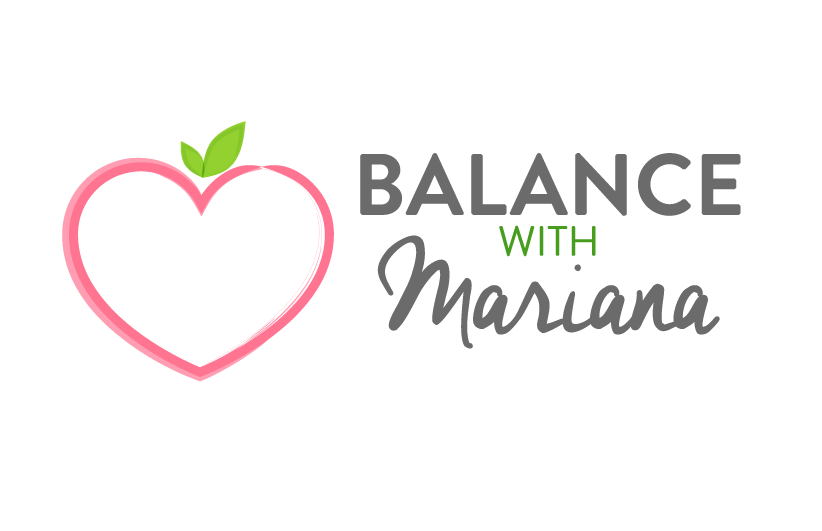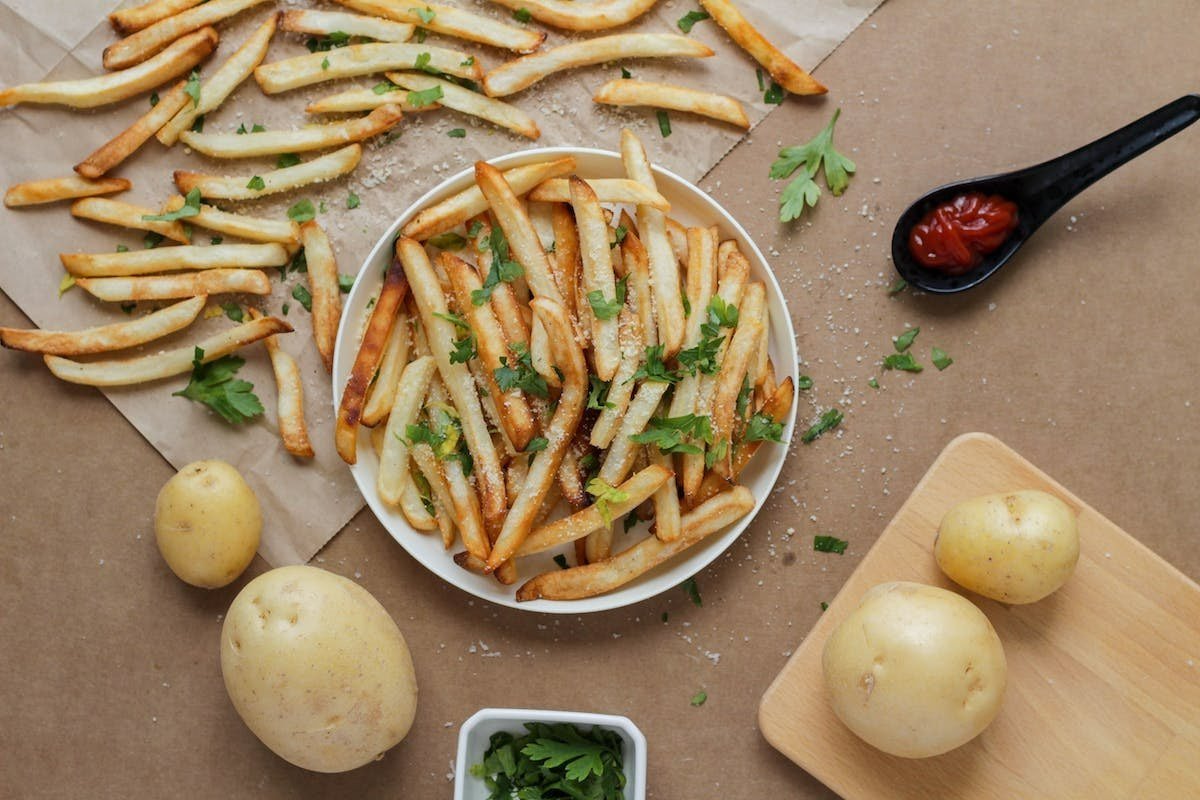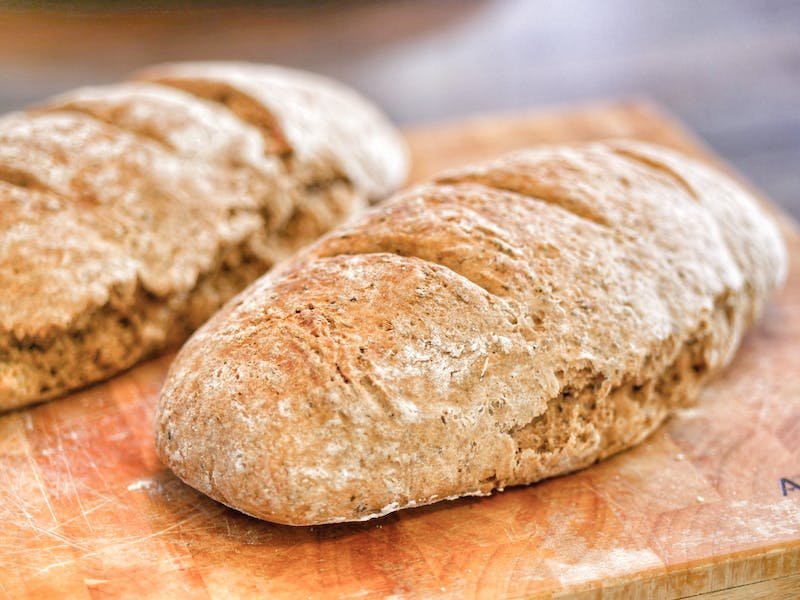So many people think of carbs as “bad”, fearing that they make us gain weight. But some amount of healthy, unrefined carbs are actually important for the fiber, energy, antioxidants and important nutrition they provide.
That being said, since carbohydrates become glucose when you eat them, and extra glucose raises your blood sugar levels, it’s VERY important to be mindful when eating carbohydrate-rich foods. Not all carbs are the same, and not all carbs lead to the large glucose spikes that we want to avoid.
Firstly,… What are carbs?
Most foods that are considered “carbs” are foods that essentialy have a high percentage of carbohydrates, but they many also contain some fiber, protein and healthy fats.
Carbohydrates are found in a wide range of foods, ranging from highly processed foods (devoid of meaningful nutrition!), to vegetables, fruits, beans, and whole grains that are rich in fiber and essential vitamins and minerals.
Most commonly we think of carbs as: grains (like rice and oats), flour and flour products (like breads and pastas), starchy vegetables like potatoes and corn, and of course, almost all sweet foods (cereals, granolas, cookies, muffins, cake, candy etc). Even beans have a high degree of carbs (but also have lots of protein and fiber), as well as almost all fruits and vegetables, too.
How do we know which are “healthy” carbs and which are “unhealthy”?
There are so many factors that play a role here, starting with the fact that each person and each metabolism is different, so what’s healthy for you may not be the same as for someone else.
Also, portion size matters especially with carbs. For example, 1/4 cup oats may be healthy for me, but 1 cup of oats will create a huge glucose spike and leave me feeling tired 1-2 hours later.
And then presentation and preparation matters too. Half a baked sweet potato with some extra-vigin olive oil and and egg on top, is VERY different from a large order of french fries.
But to keep it simple, generally, the less refined the food, the better.
So whole foods (fruits, vegetables, beans/legumes and whole grains - with their fiber intact) are generally better for our overall health and waistline, while the packaged refined pastas, cereals, crackers, chips, cakes, bars, etc. are the ones we need to be most careful with.
For example:
Added sugars and refined grain products contain minimal nutrients, will generally spike blood sugar, and can negatively affect our gut => these we want to avoid.
On the other hand, most vegetables, fruits and beans are high in carbohydrates but are also some of the best sources of fiber and micronutrients that are important for a healthy gut microbiome - so eliminating these can have negative consequences for your gut and overall health and energy levels.
However, even among whole foods, there are better and worse choices when it comes to keeping blood glucose balanced.
And similarly, within the packaged food space, some are a lot better options than others, so its important to understand how to read nutrition labels (more on this below)!
As an overall guide, I like to generally categorize carbs in this way:
“Always” carbs (to enjoy every day, in quantities that you desire)=
non-starchy veggies (lettuce, spinach, kale, arugula, broocli, cauliflower, brussels sprouts, cabbage, zucchini, green beans, eggplant, mushrooms, onion/garlic, peppers, celery, cucumber,...)
low-sugar fruits like berries, kiwis, plums, small apples/pears, citrus fruits.
“Often” carbs (to enjoy in smaller quantities somwhat regularly, maybe a few times per week, depending on your diet/gut/goals) =
starchy yet fiber-rich veggies (most squashes like butternut squash, carrots, beets, sweet potatoes)
legumes (all beans, lentils, chickpeas, peas)
higher-sugar fruits like tropical fruits
whole gluten-free grains (quinoa, buckwheat, millet, wild rice, brown rice, oats). *only those you tolerate well, and in quantities that still make you feel good
“Less Often” carbs (have in small amounts only once in a while) =
starchier veggies with less fiber (like potatoes, yuca, plantain)
gluten containing whole-grains like couscous and barley
breads - ideally ezekiel or sourdough or organic breads
tortillas - ideally gluten free & preferably organic, including almond flour, casava flour or corn tortillas
pastas - ideally gluten free & preferably organic (with 1-2 ingredients only, ex. lentil, chickpea, bean or edamame pasta, cassava flour pasta, quinoa + brown rice pasta) *only those you tolerate well, and in quantities that still make you feel good
“Almost Never” carbs (avoid as much as possible!)=
sodas (both normal and diet) and juices
sweeteners (any type of sugar or artificial sweetener! also limit honey, maple syrup, agave, etc)
flour-based products (most breads, pastas, pastries, cakes, muffins, pancakes, waffles)
other highly-processed foods (especially those with added sugars).
*NOTE: This is a general guidline that I find useful to share with my clients, but remember its exacttly that, a general guideline. Then you have to consider what portion sizes work for you, and if there are some things you don’t tolerate well, etc. which is why it helps to work with a health coach for a more personalized approach.
To see the 16 carbs I most recommend for regular consumption (primarily in the “less often” category) see HERE.
Lastly, here are 5 tips to apply when consuming carbs (to support better metabolic health):
READ LABELS. When buying packaged foods, it’s important to look at the actual ingredient list, and in the nutrition label look for:
total carbs vs. fiber - aim for total carbs:fiber to be no greater than 5:1. For example, if it has 10g total carbs, you want at least 2g fiber. If it has 20g carbs you want at least 4g fiber, etc.
sugar vs. fiber - aim for no more than 5g net sugar (sugar-fiber) per serving (ex. less than 8g of sugar per serving with more than 3g of fiber per serving - as MAX).
oils - if the product contains oil, avoid canola/ soy/ safflowe/ sunflower/ rapeseed oil; choose products with extra-virgin olive oil, avocado oil or coconut oil.
primariy organic ingredients with no/minimal additives (avoid artificial flavors, colorings, etc). MORE HERE.
LIMIT CARBS AT NIGHT. Our bodies are generally better at metabolizing glucose in the morning (especially before/after a workout). At night, aim for lower carb dinners. Stick to “category 1” carbs (and only small portions of “category 2” carbs) at dinner time. *Always testing if this feels good in your body.
MOVE AFTER (&/OR BEFORE) CONSUMING CARBS. Go for a walk or do a few squats after a higher-carb meal. Your muscles use glucose for fuel so when you use them to exercise (even if its just a quick walk!) it hleps lower blood glucose levels.
ADD FIBER. Try having added fiber with a higher carb meal, for example, add some chia seeds to your water !
DON’T EAT CARBS ALONE. Always eat your carbs with some added protein and healthy fats (and again, extra fiber helps, too!) to slow the rate at which glucose enters your blood. For example, if you’re having an apple as a snack, have a smaller apple and pair it with 1 tbsp almond butter and a sprinkle of ground flaxseeds.
RELATED BLOGS:
11 Tips for Balancing Blood Sugar
Lessons From Using a CGM (glucose monitor) + 8 Tips to Avoid Glucose Spikes
Your Shopping List for a Healthier Life
Was this helpful? If so, feel free to comment below and/or share this blog with a friend whoc could benefit!
Love and Carbs,
Mariana




